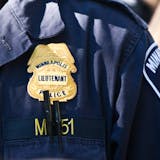Kris Folland grows corn, wheat and soybeans and raises cattle on 2,000 acres near Halma in the northwest corner of Minnesota, so his operation is far from small. But when he last bought a new tractor, he opted for an old one — a 1979 John Deere 4440.
He retrofitted it with automatic steering guided by satellite, and he and his kids can use the tractor to feed cows, plant fields and run a grain auger. The best thing? The tractor cost $18,000, compared to upward of $150,000 for a new tractor. And Folland doesn't need a computer to repair it.
"This is still a really good tractor," said Folland, who owns two other tractors built before 1982.
"They cost a fraction of the price, and then the operating costs are much less because they're so much easier to fix," he said.
Tractors manufactured in the late 1970s and 1980s are some of the hottest items in farm auctions across the Midwest these days — and it's not because they're antiques.
Cost-conscious farmers are looking for bargains, and tractors from that era are well-built and totally functional, and aren't as complicated or expensive to repair as more recent models that run on sophisticated software.
"It's a trend that's been building. It's been interesting in the last couple years, which have been difficult for ag, to see the trend accelerate," said Greg Peterson, the founder of Machinery Pete, a farm equipment data company in Rochester with a website and TV show.
"There's an affinity factor if you grew up around these tractors, but it goes way beyond that," Peterson said. "These things, they're basically bulletproof. You can put 15,000 hours on it and if something breaks you can just replace it."



